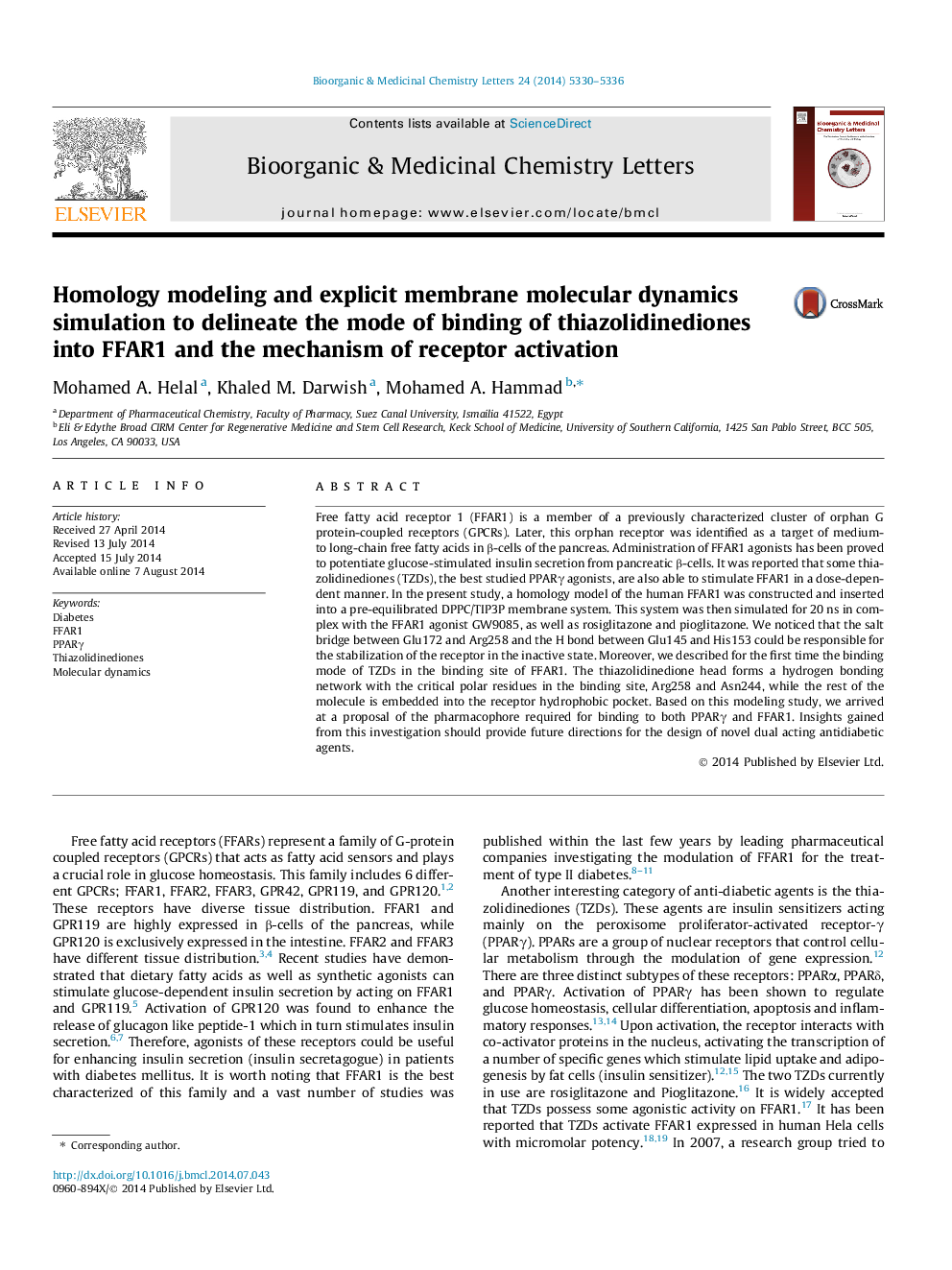| کد مقاله | کد نشریه | سال انتشار | مقاله انگلیسی | نسخه تمام متن |
|---|---|---|---|---|
| 1359393 | 981401 | 2014 | 7 صفحه PDF | دانلود رایگان |

Free fatty acid receptor 1 (FFAR1) is a member of a previously characterized cluster of orphan G protein-coupled receptors (GPCRs). Later, this orphan receptor was identified as a target of medium- to long-chain free fatty acids in β-cells of the pancreas. Administration of FFAR1 agonists has been proved to potentiate glucose-stimulated insulin secretion from pancreatic β-cells. It was reported that some thiazolidinediones (TZDs), the best studied PPARγ agonists, are also able to stimulate FFAR1 in a dose-dependent manner. In the present study, a homology model of the human FFAR1 was constructed and inserted into a pre-equilibrated DPPC/TIP3P membrane system. This system was then simulated for 20 ns in complex with the FFAR1 agonist GW9085, as well as rosiglitazone and pioglitazone. We noticed that the salt bridge between Glu172 and Arg258 and the H bond between Glu145 and His153 could be responsible for the stabilization of the receptor in the inactive state. Moreover, we described for the first time the binding mode of TZDs in the binding site of FFAR1. The thiazolidinedione head forms a hydrogen bonding network with the critical polar residues in the binding site, Arg258 and Asn244, while the rest of the molecule is embedded into the receptor hydrophobic pocket. Based on this modeling study, we arrived at a proposal of the pharmacophore required for binding to both PPARγ and FFAR1. Insights gained from this investigation should provide future directions for the design of novel dual acting antidiabetic agents.
Figure optionsDownload as PowerPoint slide
Journal: Bioorganic & Medicinal Chemistry Letters - Volume 24, Issue 22, 15 November 2014, Pages 5330–5336